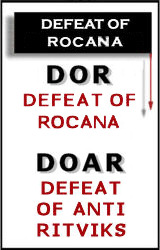 Svarupa Damodara, July 3, 1976, Washington, D.C.: […] Actually crystal of diamond is built in very simple structures. It’s a hexagon, six carbon atoms, one after another, forms a very simple structure. But on the other hand, now when life is in association with matter, if we take a simple cell, the cell is composed of so many big, big molecules like proteins and DNA’s and all these giant molecules. And they are wonderfully complex. […]
Svarupa Damodara, July 3, 1976, Washington, D.C.: […] Actually crystal of diamond is built in very simple structures. It’s a hexagon, six carbon atoms, one after another, forms a very simple structure. But on the other hand, now when life is in association with matter, if we take a simple cell, the cell is composed of so many big, big molecules like proteins and DNA’s and all these giant molecules. And they are wonderfully complex. […]
- Cell.Com: “DNA polymerases are spectacular molecular machines that can accurately copy genetic material with error rates on the order of 1 in 105 bases incorporated, not including the contributions of proofreading exonucleases.” Their paper went into detail on how the “fingers” and “thumb” of the machine open and close in precise sequence as the machine moves along the DNA strand base by base. Part of the machine rotates 50° as the machine translocates along the DNA. These machines copy millions of base pairs of DNA every cell division so that each daughter cell gets an accurate copy. The research was done on a bacterium that lives in hot springs.
Pata and Jaeger, who reviewed the paper by Golosov et al in Structure,2 included a diagram showing the “conformational changes” that DNA polymerase I undergoes in its action along the DNA strand. “After more than fifty years of research, the DNA polymerases responsible for copying the genetic material are some of the most well characterized enzymes in all of biology,” they said. “Although the polymerases are divided into several different families, they all share a common two metal-ion catalytic mechanism, and most of them are described as having fingers, palm, and thumb domains: the palm contains metal-binding catalytic residues, the thumb contacts DNA duplex, and the fingers form one side of the pocket surrounding the nascent base pair.” Three phases occur during each step along the DNA chain: the fingers open, the machine moves one base pair as it rotates, then the base in the “palm” is placed into the “pre-insertion site,” while another moving part prevents further movement till the operation is completed. Then the process repeats – millions of times per operation.- A paper in PNAS3 on DNA Polymerase I noted that “The remarkable fidelity of most DNA polymerases depends on a series of early steps in the reaction pathway which allow the selection of the correct nucleotide substrate, while excluding all incorrect ones, before the enzyme is committed to the chemical step of nucleotide incorporation.” Their paper also discussed numerous conformational changes in the operation – some that precede the emplacement of the nucleotide at each step. They described how the fingers-closing step forms “a snug binding pocket around the nascent base pair.” They discussed at length how the machine prevents mismatched bases at several stages of the operation. None of the authors of these three papers used the word evolution.
- Virus replicator: Language of moving parts abounds in an article in PNAS about the machinery a virus uses to replicate itself.4 This little helicase called NS3h undergoes three successive conformational changes as it ratchets along the DNA. Words found in the paper suggesting moving parts include: stretched spring, torsion, rotation, bending, propel, motion, unwinding, gating, cycle, kinetic steps, motor domains, structural transitions, and ratchet-type unidirectional translocation. This particular machine works in a virus that causes hepatitis C. It is part of superfamily SF2 of this kind of machine. Regarding evolution, the authors only said, “structural comparison of the representative SF1 and SF2 members reveals explicit differences in catalyzing nucleotide hydrolysis and motion (Figs. S6 and S7), reflecting the fact that these helicases have evolved to adopt divergent mechanisms and act in different biological processes.”
- Torsion springs and lever arms: There’s a molecular machine that detects stretching force when a load is applied. The keywords for a paper in PNAS5 about one of the myosins include kinetics, torsional motions, lever arm, force-sensitive transition, and more. “Myosin-Is are molecular motors that link cellular membranes to the actin cytoskeleton, where they play roles in mechano-signal transduction and membrane trafficking,” the paper begins. “Some myosin-Is are proposed to act as force sensors, dynamically modulating their motile properties in response to changes in tension.” Why do cells need force sensors? “Tension sensing by myosin motors is important for numerous cellular processes, including control of force and energy utilization in contracting muscles, transport of cellular cargos, detection of auditory stimuli, and control of cell shape.” The authors found that alternative splicing of the gene produces isoforms of the motor with lever arms of different lengths, with varying response to force. This “increases the range of force sensitivities of the proteins translated from the myo1b gene.” and it “tunes the mechanical properties of myo1b for diverse mechanical challenges, while maintaining the protein’s basal kinetic and cargo-binding properties.”
How did these myosin machines arise? They just evolved. “Myosins have evolved different tension sensitivities tuned for these diverse cellular tasks,” the authors said. That’s all they had to say about evolution. - Ribosome dynamics: When transfer-RNAs and messenger-RNAs traverse the ribosome protein-assembly factory with their amino-acid cargos and genetic data readouts, respectively, they undergo several motions as they are transported along. Researchers writing in PNAS said,6 “Spontaneous formation of the unlocked state of the ribosome is a multistep process.” Their paper described how the L1 stalks of the ribosome bend, rotate and uncouple – undergoing at least four distinct stalk positions while each tRNA ratchets through the assembly tunnel. At one stage, for instance, “the L1 stalk domain closes and the 30S subunit undergoes a counterclockwise, ratchet-like rotation” with respect to another domain of the factory. This is not simple. “Subunit ratcheting is a complex set of motions that entails the remodeling of numerous bridging contacts found at the subunit interface that are involved in substrate positioning,” they said.
Since the discovery of molecular machines, biochemistry has transformed into biophysics. The kind of chemistry we learned in school is inadequate for understanding the machinery of the cell. Interactions between molecules are not simply matters of matching electrons with protons. Instead, large structural molecules form machines with moving parts. These parts experience the same kinds of forces and motions that we experience at the macro level: stretching, bending, leverage, spring tension, ratcheting, rotation and translocation. The same units of force and energy are appropriate for both – except at vastly different levels.
1. Golosov, Warren, Beese and Karplus, “The Mechanism of the Translocation Step in DNA Replication by DNA Polymerase I: A Computer Simulation Analysis,” Structure, Volume 18, Issue 1, 83-93, 13 January 2010, 10.1016/j.str.2009.10.014.
2. Janice D. Pata and Joachim Jaeger, “Molecular Machines and Targeted Molecular Dynamics: DNA in Motion,” Structure, Volume 18, Issue 1, 13 January 2010, Pages 4-6, doi:10.1016/j.str.2009.12.003.
3. Santoso et al, “Conformational transitions in DNA polymerase I revealed by single-molecule FRET,” Proceedings of the National Academy of Sciences, January 12, 2010, vol. 107, no. 2, pp. 715-720, doi:10.1073/pnas.0910909107.
4. Gu and Rice, “Three conformational snapshots of the hepatitis C virus NS3 helicase reveal a ratchet translocation mechanism,” Proceedings of the National Academy of Sciences, January 12, 2010, vol. 107, no. 2, pp. 521-528, doi:10.1073/pnas.0913380107.
5. Laakso, Lewis, Shuman, and Ostap, “Control of myosin-I force sensing by alternative splicing,” Proceedings of the National Academy of Sciences, January 12, 2010, vol. 107, no. 2, pp. 698-702, doi:10.1073/pnas.0911426107.
6. Munro, Altman, Tung, Cate, Sanbonmatsu and Blanchard, “Spontaneous formation of the unlocked state of the ribosome is a multistep process,” Proceedings of the National Academy of Sciences, January 12, 2010, vol. 107, no. 2, pp. 709-714, doi:10.1073/pnas.0908597107.







Speak Your Mind